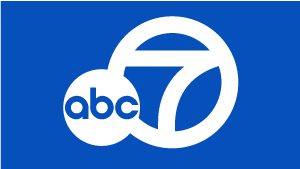USGS report: Bay Area quake could lead to massive loss of life, property


BERKELEY, Calif. (KGO) -- Wednesday marks 112 years since the 1906 earthquake in San Francisco, when 3,000 people died and 80 percent of the city was destroyed.
On this anniversary comes a worrisome warning. Researchers say if a major earthquake hit today, perhaps in Oakland, it would be far more dangerous.
RELATED: Scientists issue alarming new prediction for Hayward Fault
It was no accident that organizers of the day-long Haywired Earthquake scenario chose UC Berkeley's Memorial stadium to host the afternoon session.
The stadium is one of 300 major buildings built on or dangerously close to the Hayward Fault.
Last year, The US Geological Survey and its state counterpart released a report on how widespread damage from a huge magnitude 7 earthquake could be.
RELATED: New simulation shows destruction of 7.0 quake on Hayward Fault
In the meantime, they've collaborated with engineers and state and local governments on how bad things could get, and planned Wednesday's scenario around it.
"Today is like as if this quake scenario happened and we're getting an initial clear look at the danger from it," said USGS's Dr. Kenneth Hudnut.
Based on computer models, the quake could cause 800 deaths, 18,000 injuries, 2,500 people would be trapped in collapsed homes and businesses and 22,000 would be trapped in stalled elevators.
Then there's the financial cost. "The total effect of the main shock and aftershocks on the order of $82 billion," Hudnut said.
VIDEO: What to pack in your earthquake emergency kit
Add another $30 billion for fires following the quake. But the news is not all bad.
Many buildings along the fault have been retrofitted. For Memorial Stadium, that's meant $200 million to add expansion joints and shock absorbing dampers to protect fans.
At home, you won't need anything like $200 million dollars. But you will need an earthquake kit and a plan.
RELATED: Ceremony held honoring victims of 1906 quake in SF on 112th anniversary
"What I would like people to take away from the Haywired scenario is there really is something we can all do to reduce the impact of this earthquake, which is inevitable," said UC Seismological Lab's Prof. Richard Allen.
Later this year USGS will take a 6-month look back at the quake, as if it really happened, the longer term impacts and what we should have learned from it.
BAY AREA QUAKE GUIDE: What you need to know
Click here for the latest stories and videos about earthquakes here in the Bay Area and around the world, and click here for more information on disaster preparedness.




















